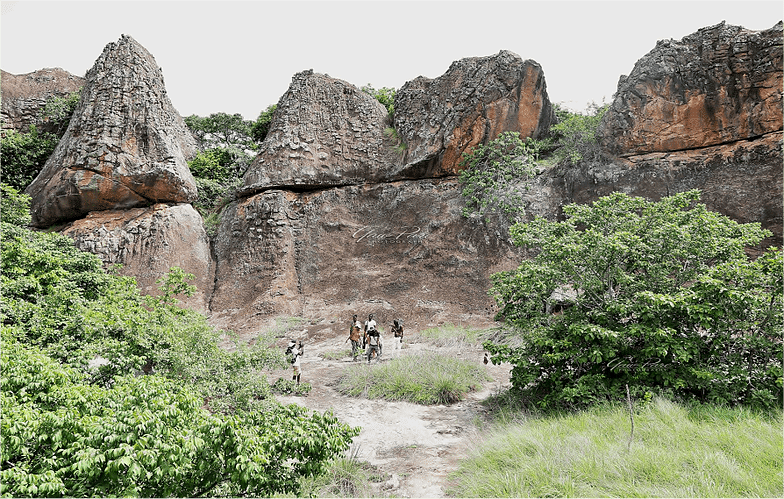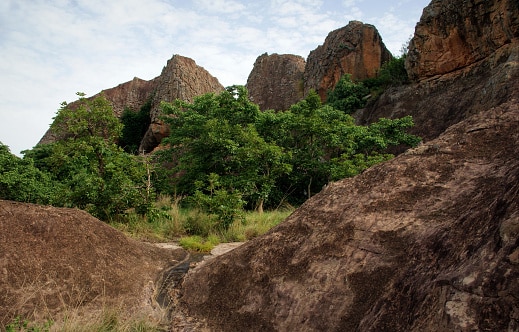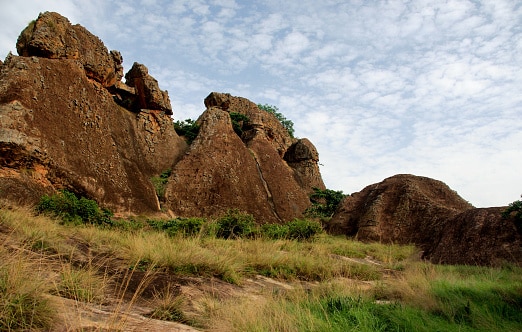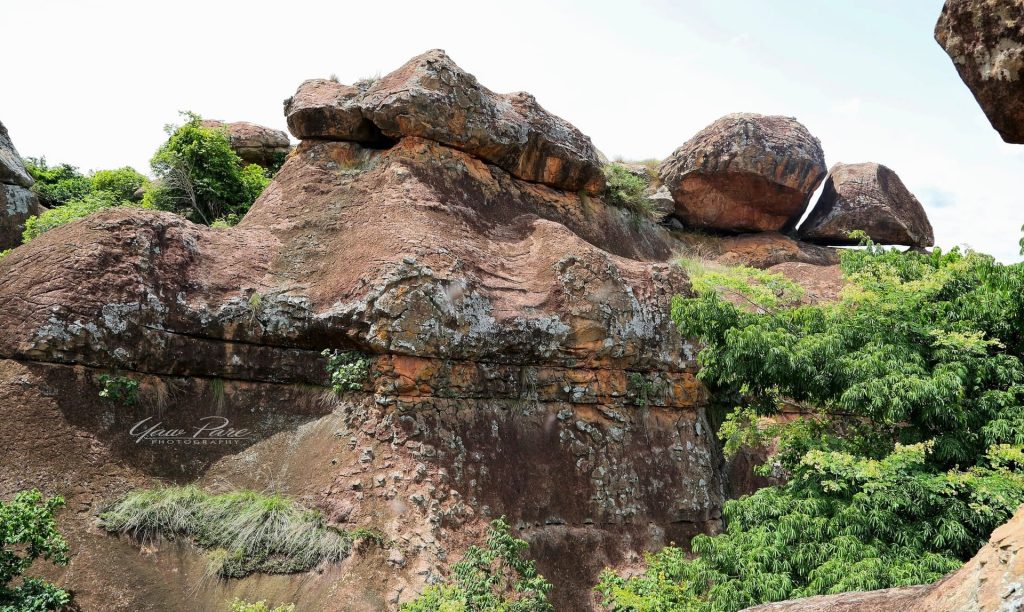Tanoboase Sacred Grove and Shrine is a significant cultural and historical site located near the village of Tanoboase in the Techiman, Brong Ahafo region of Ghana. It holds great importance to the Bono people, as it is considered their cradle and traditional home. The grove is believed to house powerful Ashanti Gods, according to the Tanoboase community. It has also played a role in the Ashanti Wars, served as a hideout during the slave trade and inter-tribal conflicts, and remains a site for religious activities.

The name “Tano” refers to several gods and originates from the Tano River. This sacred grove and shrine is one among many similar sites found throughout Ghana, contributing to the country’s rich cultural heritage. Within the grove, there is a rock shrine that houses the original brass pan and is divided into five compartments: the main entrance, durbar ground, hideout, watchtower, and stairs.
The Tanoboase Sacred Grove and Shrine serves as an oasis that preserves biodiversity and embodies the cultural and religious knowledge systems of the Bono people. It has attracted attention from NGOs and scholars who recognize the importance of traditional beliefs and culture-based knowledge in addressing environmental and developmental challenges. This shift towards a more inclusive and bottom-up approach to development acknowledges the significance of local customs and practices.

In 1996, the Tanoboase Grove was designated as a Community-Based Ecotourism Project (CBEP), aiming to promote sustainable tourism and community involvement. This initiative highlights the importance of preserving and showcasing the sacred grove’s natural and cultural heritage.
Beliefs and practices associated with the Tano sacred grove and rock shrine are deeply rooted in the indigenous religion of the Bono people. They believe that the grove is not only the dwelling place of local gods and ancestral spirits but also hosts supernatural beings. Oral traditions have been passed down through generations, recounting the founding of the sacred grove. According to legend, the deity Taakora appeared to Afya Ankomah and provided instructions for the Bono people to live in the rock caves. The instructions included prohibitions against hunting or farming within the sacred grove, while the caves offered shelter, security, and hiding places for kings.

The Tanoboase Sacred Grove and Shrine serves as a testament to the cultural, historical, and spiritual heritage of the Bono people. It stands as a living reminder of their connection to the land, their traditions, and their resilience in the face of challenges throughout history. By preserving and promoting this sacred site, Ghana celebrates its diverse cultural landscape and provides an opportunity for visitors to appreciate the significance of indigenous knowledge systems and the importance of sustainable practices.






































